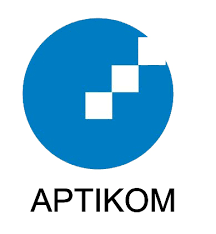Implementation of Simple Additive Weighting to Decide a Fund Proposal
DOI:
https://doi.org/10.18196/eist.v4i2.20741Keywords:
decision support system, customer, financing, SAWAbstract
One of Indonesian micro financial services is Baitul Maal Wat Tamwil (BMT) provides services such as savings, financing and zakat activities. Financing service determine qualifying status based on consideration of customer files before carried out in company discussions. This decision support system aims to provide officers to decide whether or not to admit funding. The research used Simple Additive Weighting (SAW) by finding the prejudiced sum of the performance ratings for each alternative from all criteria. The method used 7 criteria including income, outstanding loans, amount of financing, collateral, nature/environment, track record of financing and monthly expenses. Customers were declared acceptable if they had a preference value above the minimum limit of 16.1. The BMT officer can adjust the minimum limit value according to customer performance. To develop the system used waterfall method and to verify system performance used a black box test which shows the results that the system works according to its function and the validity test results obtained 100% accurate. It means the system is ready and suitable for use. The existence of this decision support system is able to assist officers in making decisions to qualify for financing objectively.References
Nisrina, S. (2021). “Study of the Multiservice Financing System at BMT Nurul Ummah Sukabumi” (In Indonesian). Nusantara Hasana Journal, 1(4), 102–107.
Subakti. T.. & Nurhidayah. M. (2020). “Microfinance Institutions and Their Position in the Islamic Economy”(In Indonesian). Jurnal Ilmu-ilmu Keislaman dan Kemasyarakatan.
Trisnawati. T.. Puastuti. D.. & Sholeha. L. (2020). “Selection of the Best Learning Media as an Effective Learning Tool Using the SAW Method” (In Indonesian). Jurnal Penelitian Ilmu Pendidikan. 13(1). 72–84. https://doi.org/10.21831/jpipfip.v13i1.30474
Kusumantara. P. M.. Kustyani. M.. & Ayu. T. (2019). “Comparative Analysis of SAW and WP Methods in the Decision Support System for Selection of Wedding Organizers in Surabaya” (In Indonesian). Teknika : Engineering and Sains Journal. 3(1). 19–24.
Fauzi. A. A.. Zahro’. H. Z.. & Prismawara Prasetya. R. (2020). “Comparative Analysis of Topsis and SAW Methods in Determining Road Repair Priorities in Rembang Regency” (In Indonesian). In Jurnal Mahasiswa Teknik Informatika (Vol. 4. Issue 2).
Hamdan, M. R., Triayudi, A., & Iskandar, A. (2022). “Comparison of Simple Addtive Weighting and Weight Product Methods Using a Decision Support System on BLT Acceptance” (In Indonesian). JURIKOM (Jurnal Riset Komputer), 9(5), 1543. https://doi.org/10.30865/jurikom.v9i5.4970
Alviani. U.. & Arifin. R. W. (2022). “Decision Support System for Determining Candidates for Financing Members at Baitul Maal Wa Tamwil Bina Usaha Mandiri Indonesia” (In Indonesian). Information System For Educators And Professionals. 6(2). 137–146.
Pahu. G. K. S.. & Astuti. Y. P. (2019). “Decision Support System Application for Providing Loan Credit Eligibility to BMT Using the Simple Additive Weighting Method” (In Indonesian). In JTKSI (Vol. 02. Issue 01).
Alviani. U.. & Arifin. R. W. (2022). “Decision Support System for Determining Candidates for Financing Members at Baitul Maal Wa Tamwil Bina Usaha Mandiri Indonesia” (In Indonesian). Information System For Educators And Professionals. 6(2). 137–146.
Wibowo. D. W.. Mentari. M.. Candra. A. D.. Kuddah. A. A.. & Putra. R. W. (2020). “Web-Based Decision Support System Job Recommendations for JTI Polinema Graduates Using the SAW Method” (In Indonesian). Jurnal Aplikasi Sains. Informasi. Elektronika. Dan Komputer. 2.
Firmansyah. Y.. Maulana. R.. & Fatin. N. (2020). “Website-Based Citizen Complaint Information System (Case Study: Central Siantan Subdistrict, North Pontianak)” (In Indonesian) Jurnal Cendekia. XIX.
Maulana. W. A.. Nugroho. A.. & Adriyanto. T. (2021). “Supplier Decision Support System Using Simple Additive Weighting Method in Ragil Building Store” (In Indonesian). Seminar Nasional Inovasi Teknologi.
Pamungkas, A. W., Nugroho, D., & Siswanti, S. (2019). “Decision Support System for Underprivileged Scholarship Acceptance at SMK Harapan Using the Simple Additive Weighting (Saw) Method”(In Indonesian). Teknois : Jurnal Ilmiah Teknologi Informasi dan Sains, 9(1), 73–82.
Pinatih. G. P.. & Hidayatullah. D. (2022). Design and Build an Inventory System Using the Waterfall Model. Jurnal Teknik Informatika Dan Sistem Informasi. 9(1). 2407–4322.
Pebriana, R., & Efendi, R. (2019). BMT Murobahah Financing Management Analysis. Wadiah : Jurnal Perbankan Syariah, 3(1).
Pressman, R. S. (1995). Software Engineering. I Software Engineering Journal (Bd. 10, Nummer 6). https://doi.org/10.1049/sej.1995.0031
Rambe. B. H.. Pane. R.. Irmayani. D.. Nasution. & M.. Munthe. I. R. (2020). UML Modeling and Black Box Testing Methods in the School Payment Information System. In Jurnal Mantik (Vol. 4. Issue 3). https://iocscience.org/ejournal/index.php/mantik
Ridwanullah. I. (2022). “Design of Savings and Loans Information System at KSPPS BMT Barrah Cimahi Branch Office” (In Indonesian). Journal of Academic International Consortium of Indonesia.
Ristian. Y.m & Anggoro. D. A. (2021). “Decision Support System for Selecting Ormawa FKI UMS Activity Schedules Using the Web-Based Weighted Product Method” (In Indonesian). Jurnal Teknik Elektro.
Suprayogi, D., & Mustafidah, H. (2021). “Comparison of Simple Additive Weighting (SAW) and Weighted Product (WP) Methods in Determining Eligibility for Providing Electronic Credit” (In Indonesian). Sainteks, 18(1), 51. https://doi.org/10.30595/sainteks.v18i1.10565
Wahyudi, Santony, J., & Nurcahyo, G. W. (2020). “Decision Accuracy in Determining Outstanding Teachers Using the Simple Additive Weighting Method” (In Indonesian). Jurnal Sistim Informasi dan Teknologi, 2(2017), 9–14. https://doi.org/10.37034/jsisfotek.v2i1.15



